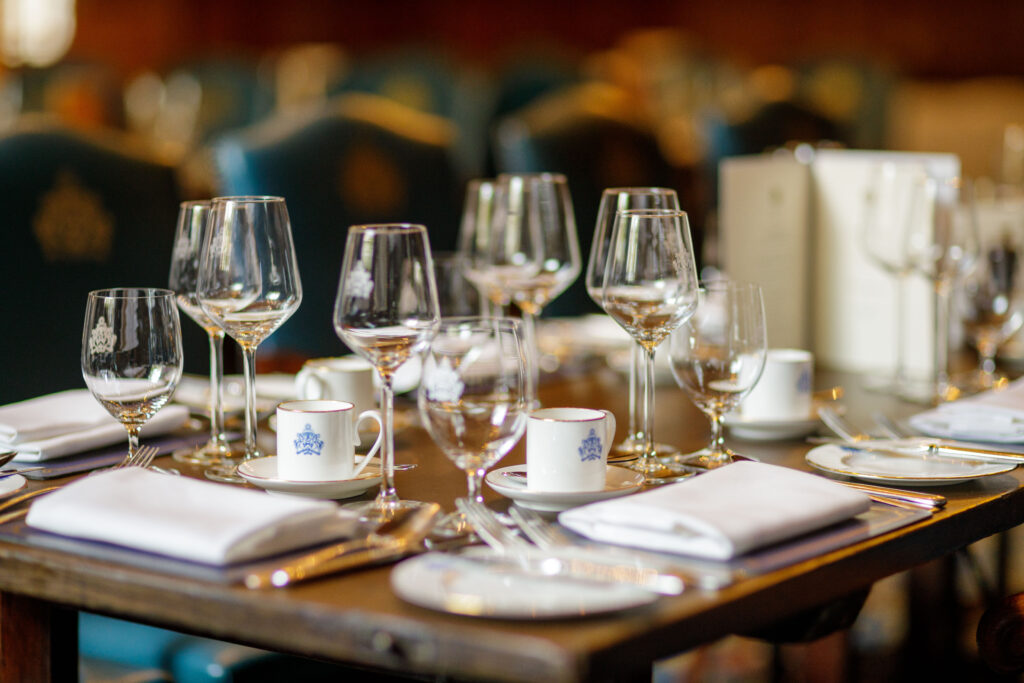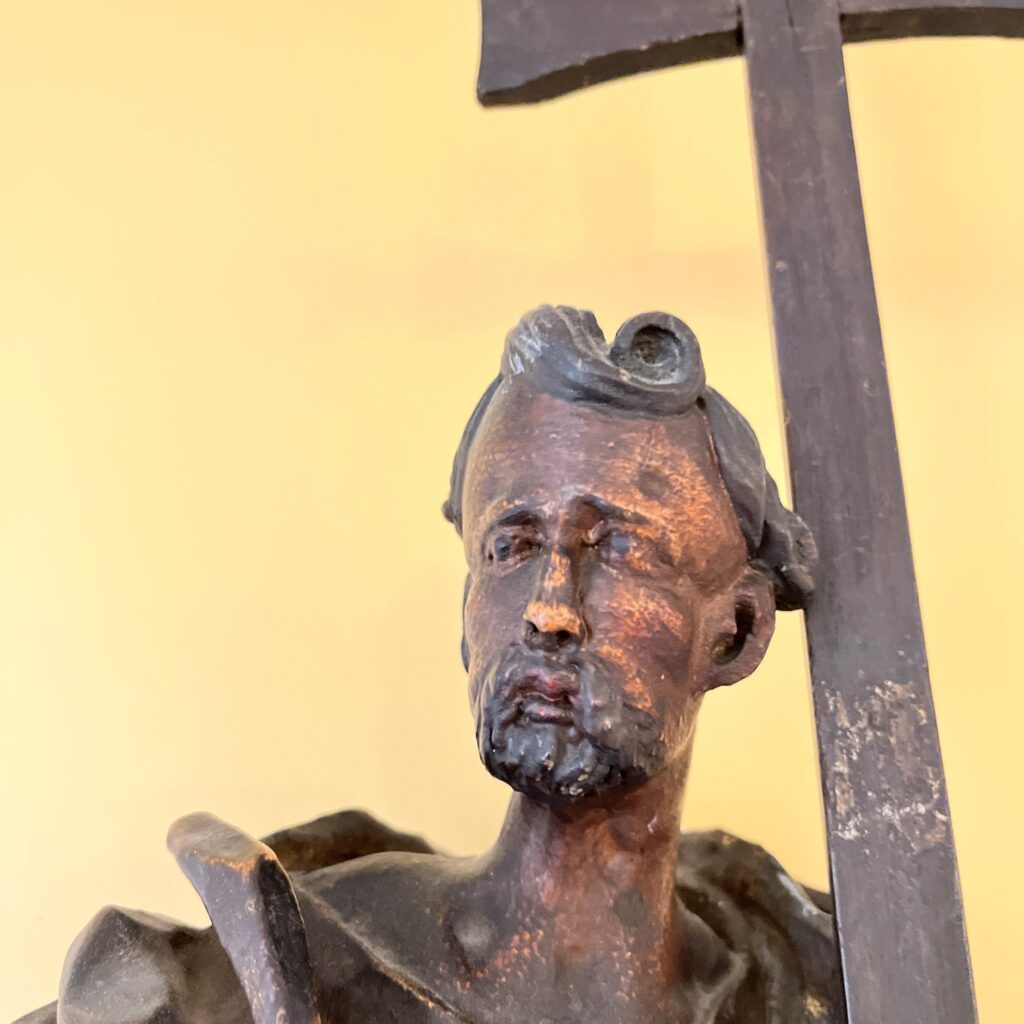About the Worshipful Company of Innholders
We are a Livery Company based in the heart of the City of London. 32nd in the order of precedence, our first Royal Charter was granted by Henry VIII in 1514.
We are a Livery Company based in the heart of the City of London. 32nd in the order of precedence, our first Royal Charter was granted by Henry VIII in 1514.

Today the Worshipful Company of Innholders’ offers fellowship to its members, conviviality to their guests and charitable service to the community. From our historic Innholders’ Hall we offer hospitality in its broadest sense, in accordance with our motto Hinc Spes Effulget: ‘Hope Shines Out from Here’.
Discover how London’s innkeepers evolved from serving 13th-century pilgrims to becoming one of the City’s most enduring Livery Companies, surviving fires, wars, and social upheaval whilst maintaining their charitable mission.


The management of the City of London is based on a Charter granted to its citizens by William the Conqueror giving them a remarkable degree of autonomy. In 1214 the citizens won from King John the additional right to vote for their Mayor.
The Innholders are one of over a hundred Livery Companies in the City. Their origins lie in the mediaeval Guilds, which were formed under licence of the Crown and the Corporation to regulate their crafts, trades or services within the square mile.
Many are incorporated by Royal Charter and together they comprise the electorate from which the Lord Mayor, the two Sheriffs, and some other Officers of the City are chosen. The Innholders stand 32nd in the precedence of Livery Companies and have provided five Lord Mayors.


Inns started to assume their colourful role in our national life during the 13th Century in order to serve the growing number of pilgrims and traders when monasteries could no longer meet their needs. In addition to drink, they offered bed and board for travellers and their mounts, and this distinguished them from taverns and alehouses.
In the 14th Century, the Lord Mayor and Court of Alderman in the City of London kept watch over the activities of these establishments, and the men and women who ran them were known as hostellers and haymongers or herbegeours. The first formal mention of a Guild of Hostelers and Haymongers appears in 1327 but haymongering gradually disappeared from the guild’s title and in 1446 the Lord Mayor confirmed the ordinances of the Guild of Hostelers. In 1473 the Guild successfully petitioned the Lord Mayor and Court of Aldermen to be known as “Innholders”. It is thought that the change of name was sought because the title “hosteler” was confused with that of his servant, the osteler.


Incorporation: The Innholders received their first Charter, setting out their rights and privileges, from Henry VIII in 1514. Seven years later they occupied a Hall on the present site, beneath which still lie the foundations of the Roman Quay, which lay in the angle between the north bank of the Thames and the east bank of the Walbrook.
Patron Saint: As was customary, the Company adopted a Patron Saint – St. Julian the Hospitaller, legendary for his solicitude for travellers.
The Company: The affairs of the Company are presided over by a Master and three Wardens (Upper, Middle and Renter), who each hold office for a year, and a Court of twenty Assistants. They are elected from the body of the Livery – a name deriving from the right to wear certain dress – who currently number about one hundred and fifty. The Liverymen, in turn, are drawn from the ranks of Freemen who may qualify by patrimony (inheritance), servitude (apprenticeship), or redemption (purchase). There are currently around one hundred Freemen in the Company. The Company’s business is managed by the Clerk, aided by the Assistant Clerk, and its Hall and ceremony is overseen by the Beadle.


Royal Displeasure: During the most dramatic century in its history, the Company was granted a Coat of Arms by Charles I in 1634 and several times successfully applied to Charles II and James II for renewal of its Charters, strengthening and widening its influence beyond the confines of the City. Despite this, many Innholders, like numerous Liverymen in other companies, expressed vehement opposition to the Middle Stuarts on religious and constitutional grounds. James II ordered them to be expelled from the Company and they were replaced by men acceptable to the Crown.
The Fire of London: In 1666 the Hall, close to the centre of the Great Fire, was destroyed together with most of its early records. Fortunately, its fine silver and Charters survived, either because they were being held by the Master at the Ram Inn in Smithfield or because they were removed there swiftly after the fire broke out. The Hall was immediately rebuilt and completed by 1670. The original front doorway, the old Court Room, and the magnificent Dining Hall have been altered little since.


The City: The opening in 1750 of Westminster Bridge broke the City’s monopoly of cross-river traffic while imports and the growth of industry provided competition from other cities. In the 19th Century the railways revolutionised patterns of trade and living. Over two hundred years the City’s population dwindled from 200,000 to 27,000 and dwellings gave way to offices for business, shipping, exchange, insurance and banking. London’s population expanded into the West End, the East End and the new suburbs.
The Liveries: During the same period the Innholders forewent their rights outside the City and their authority was further undermined by Parliament’s new distilling and licensing laws. By about 1800, as with other Liveries, they could no longer sustain their numbers exclusively from within their own calling and, henceforward, family connection, rather than the trade of Innholding, gradually became the enduring criterion for enrolment in the Company. Railways spelt the end of stage coaching and many of the inns that served it across the Country and in the Capital. Very few Liveries were established in the 18th and 19th Centuries.


When a Royal Commission was set up in 1884 to examine whether the Livery Companies had any further claim to their traditional privilege and, where it existed, their wealth, public opinion was swayed in their favour out of respect for the rights of property and for the wide range of charitable work, which so many of them funded.


By careful stewardship and management of the property left or presented to it over the years, the Company has been able to restore its fortunes, its Hall and its links with Innholding, which had almost entirely lapsed by the beginning of the 20th Century. There are strong links with The Master Innholders, an organisation founded in 1978 to renew the relationship between the Company and its trade.
The Hall, which had undergone radical repair in the 1880’s, was seriously damaged in the blitz of 1941 and had to be substantially restored in 1947 – 1952. Further important work, the improvement of facilities and the creation of a new entrance hall and reception room were completed in 1990 and improvement of facilities to equip the Hall for the catering and dining side of its operations took place in the summer of 2004.
Charitable giving has always been a fundamental aspect of the City’s livery companies, and the Company is proud to continue in this tradition through the Innholders’ Charitable Foundation (the ICF). The ICF was formed following the amalgamation of a number of Innholders’ charities, and today distributes around £450,000 to charities assisting the young, the elderly and those in the hospitality industry.
The Company has affiliations with the RAF (No. 32 (The Royal) Squadron) and the Royal Navy (HMS Sutherland). It is proud to give an annual award to a junior member of the Squadron and the ship respectively.
The Worshipful Company of Innholders has its origins in the hospitality trade. Although many of its members now have no direct links to hospitality, during the 1970s the Company looked to strengthen its relationship with the trade to which it had historic links. To that end, in 1978 members of the Company were instrumental in creating ‘The Master Innholders’, an organisation for leading hoteliers.

The Master Innholders is now an independent organisation but links between it and the Company remain strong and many members of the Company are also Master Innholders.
If you are a Master Innholder and are interested in joining the Company, please contact the Clerk at [email protected] for further information.

The Company supports the hospitality industry through the Innholders’ Charitable Foundation which sponsors the Innholders’ Scholarships, along with the Savoy Educational Trust and the Lord Forte Foundation. These scholarships are for professional development of mid-career hotel managers who have the potential to go on to be leaders in the industry. The alumni association of the programme is known as the Innholders’ Scholars.
You can find out more about the Innholders’ Scholarships and the Innholders’ Scholars from the Master Innholders who administer the scheme.

Charitable giving has always been a fundamental aspect of the City’s livery companies and the Company is proud to continue in this tradition through the Innholders’ Charitable Foundation.
Please find our most recent annual review document in PDF format for download below.